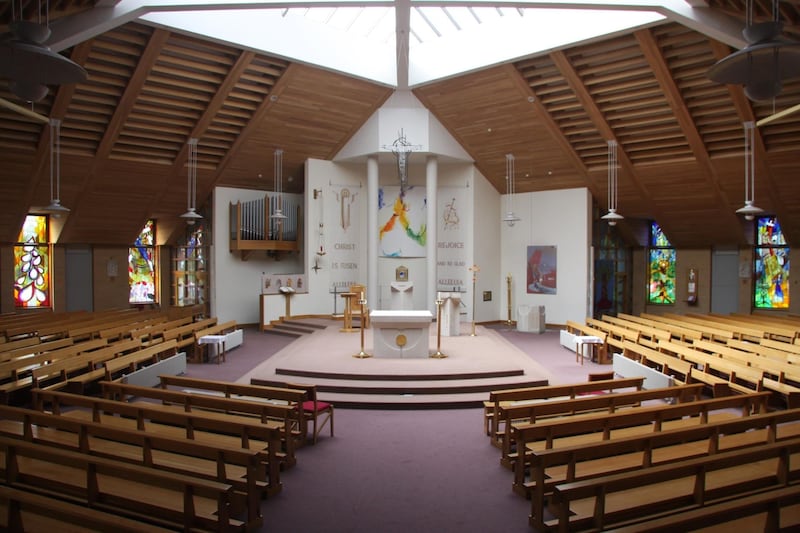LAWRENCE McConville was a leading figure in the generation of Irish architects who re-imagined how Catholic churches could look and feel after the Second Vatican Council.
As a child growing up in south Belfast, he was familiar with the traditional cross-shaped churches where the congregation was distant and divided from the priest, his back turned as he delivered the liturgy in Latin.
In the 1960s, however, the focus dramatically shifted to involvement of the laity and the layout of church buildings began to change accordingly.
As an original member of the Catholic Church’s Advisory Committee on Sacred Art and Architecture, Lawrence was to the fore of a group of professionals who responded to this challenge.
His best known building is perhaps the Catholic Chaplaincy at Queen's University, which earned the rare distinction of being granted listed status within the architect's lifetime.
As well as skilfully integrating a modern design into the sensitive Elmwood Avenue location, clever use of glass allowed the beautiful chapel at the rear to be visible from outside - reflecting Vatican II's new spirit of openness.
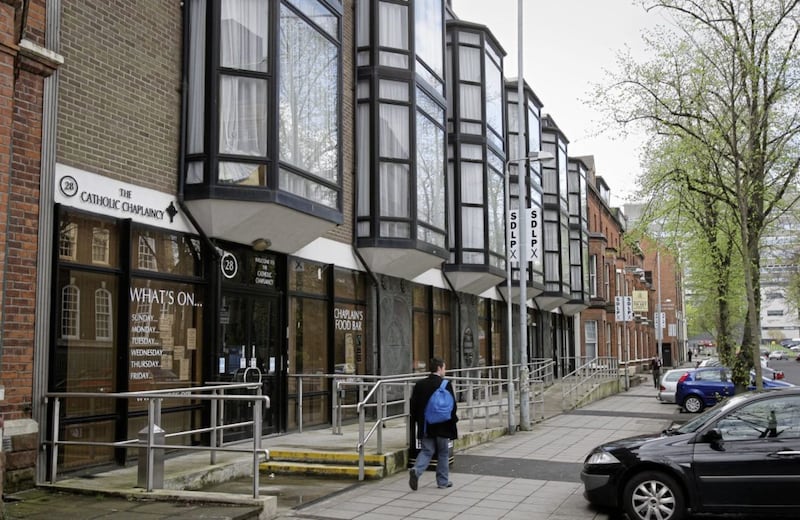
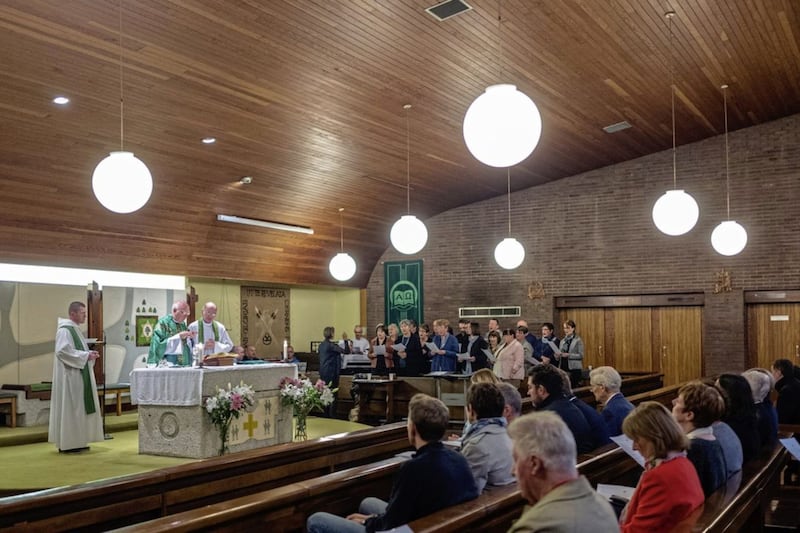
New internal dynamics were also used to stunning effect in the chapel of the Sisters of Mercy convent in Cookstown, a project which won widespread praise and remained a source of personal pride.
Its square, open design gathered people in close proximity around the altar and the building was also notable for its integration of artwork from the design stage, including stained glass windows by Patrick Pye. This symbiotic approach would be a defining feature of Lawrence's work.
Other church projects included Holy Family in Coalisland; St Anne’s, Derriaghy; St Patrick’s, The Braid; and the Church of the Immaculate Heart of Mary, Carryduff.
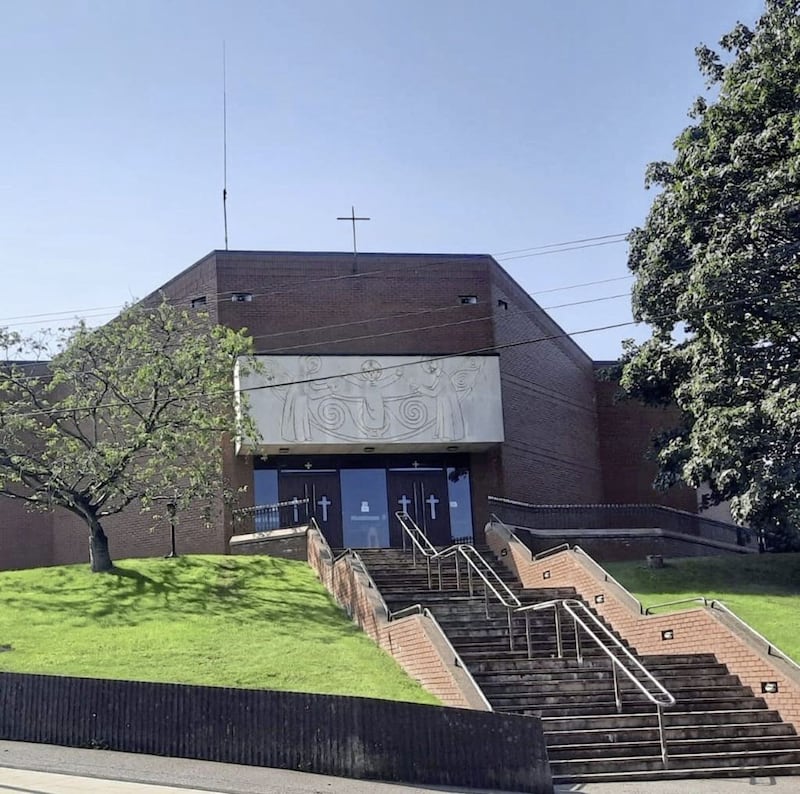
Lawrence was also tasked with reordering the sanctuary of St Patrick’s Cathedral in Armagh and the rebuilding of St Colmcille's, Holywood after a fire in 1989.
It's warm, welcoming design, incorporating the original stone spire and bell tower, reflected an appetite for a less purist approach to form and materials.
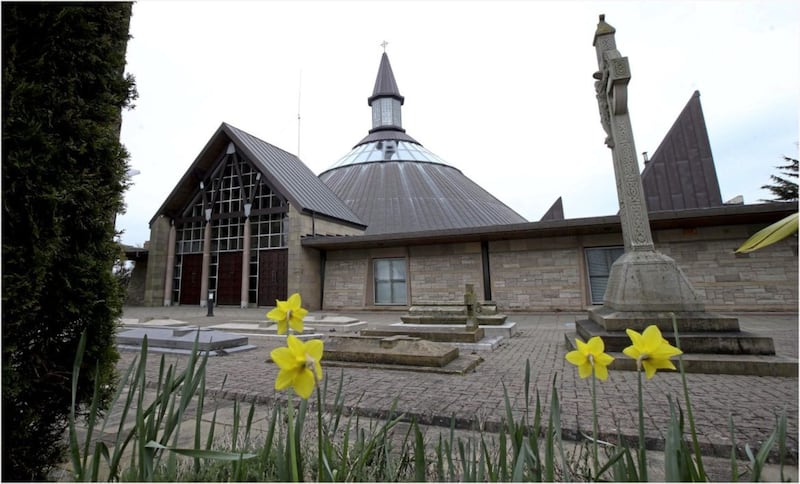
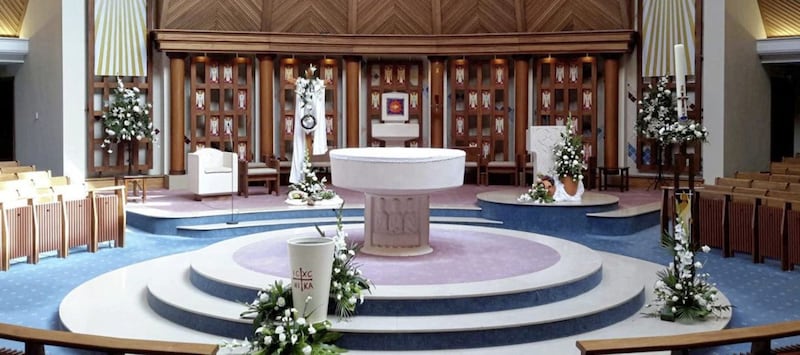
All of these projects were informed by his own devout faith and deep interest in how liturgy could be enhanced by architectural setting.
Born in 1930, Lawrence grew up on Belfast's Ormeau Road and was a pupil at St Malachy's College before studying architecture in Edinburgh, while spending summers exploring Europe, often with his brother Fr Gerry.
Returning home, he developed a successful partnership known originally as Cosgrave, Rooney and McConville and later Rooney and McConville.
As well as his work on churches, he designed schools and other parish buildings as well as the normal range of homes and other commissions.
Colleagues cherished his wit, wisdom and patience and said he treated the firm like a family, always available to offer support on a personal and professional level.
With Fr Gerry, he would contribute to articles on liturgy in the clerical publication The Furrow.
He also had a close relationship with the Koinoina John The Baptist Community for two decades, making his former office premises on Upper Crescent available for community activities.
Lawrence married Edith Kathleen Jeffers in 1967 and they had two daughters, Michelle and Adrienne, and a son, Jon.
He also doted on his 13 grandchildren and two great-grandchildren, who hold fond memories of weekend trips to Strangford Lough, the Curzon cinema, Belfast Zoo and Ulster Museum.
They said he had a tremendous ability to understand people, their strengths and their differences.
"We will never forget the values he taught us – to share, to be generous, be curious, and open minded. He never judged and when any of us where in troubled water and hit a few bumps in the journey of life, he would step in with a listening ear and sound advice."
Lawrence suffered the loss of his wife in 2005 but lived lived independently until February this year, when he moved to Nazareth House Care Village.
He died on September 7 and was buried after funeral Mass at the Church of the Immaculate Heart of Mary, Carryduff, surrounded by the people he loved and a building he had lovingly designed himself.
